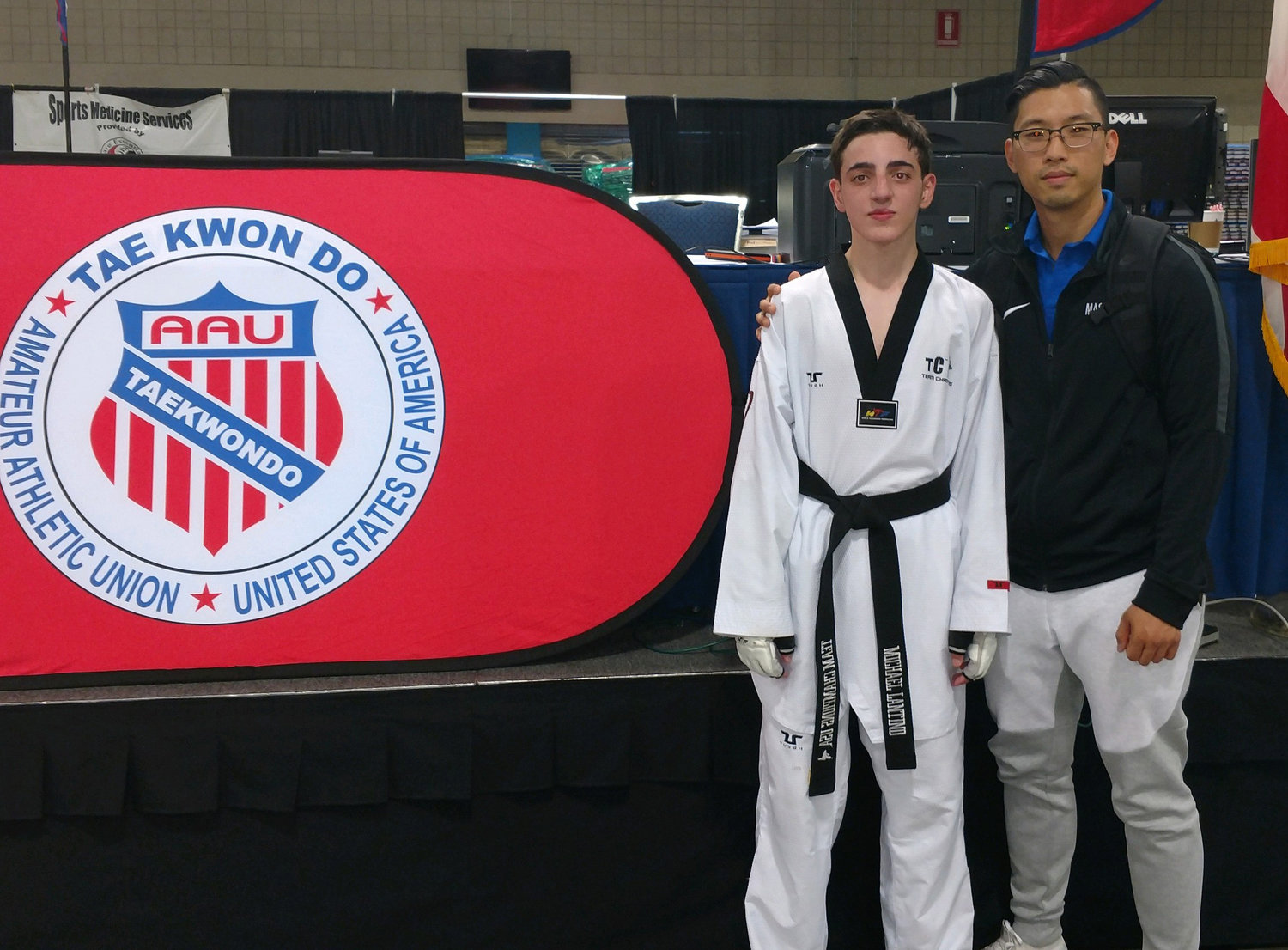Seaford black belt earns two national berths
Tae kwon do black belt makes national teams
Making a national team might seem like a big deal for most 15-year-old athletes, but for Seaford resident Michael Lantino, it’s business as usual.
The MacArthur High School sophomore, who began training in the Korean martial art tae kwon do when he was 4, made the national team in his age and weight class for the first time when he was 11.
Lantino said that this year, he is the youngest in his age group and the youngest from Champions Taekwondo — the network of schools in which he trains — to make the national team. He qualified last month for both the American Taekwondo United and Amateur Athletic Union teams.
Competition for the AAU team was stiff, and Lantino had to win six matches to earn the privilege of representing his country and his school. He will compete next year in a European tournament yet to be determined.
“Last year, we were supposed to go to Greece,” he said. “But something happened, and we ended up going to Germany instead.” Before he goes overseas, Lantino will compete next month in the Las Vegas Open, an international tournament, in the flyweight class’s junior division for black belts.
Young masters
The Champions Taekwondo school in Amityville was crowded on Oct. 25 as Master Soonkwon Kang, a fifth-degree black belt, put more than a dozen students through various forms. The master, who studied in Korea, at Youngin Taekwondo University, came to the U.S. four years ago to intern with a former U.S. national champion, Master Andrew Oh, at Ultimate Champions Taekwondo in Bayside before opening his own Champions franchise.
A surprising number of young students were wearing black belts. Lantino earned his at age 9.
He described some of the forms — or poomsae — required for each belt. In order to be promoted, students must master each belt’s forms, but they may also be tested on any of the previous forms as well. Tae kwon do has a total of 10 colored belts, although the World Taekwondo Federation only recognizes eight, including white and black. Black belts have an additional 12 degrees, Lantino said, each with its own set of forms, or taegeuk. Students wrap pieces of tape, or “tips,” on their belts as they progress through each belt’s forms.
Lantino said he would be testing for his second-degree black belt in December. He added that young black belts do the same training as older colleagues, although some slight allowance may be made for tests requiring strength, such as breaking boards. “I only had to break two at a time when I got my black belt,” he explained. He will have to break six or more at his test in December. Very young black belts usually test again as they get older.
Lantino said he followed his older brother, John, into the sport. “I wanted to do it because he was doing it,” he said. John has continued to train, and has earned his black belt as well. The two now sometimes train together, despite John’s higher weight.
Originally, tae kwon do was a purely defensive martial art, according to the Team USA website. Roughly translated, tae means kicking or jumping, kwon means fist and do is the way.
The sport is divided into two broad categories, Lantino said. The first focuses mainly on sparring, and is the form he practices. It is also the form that is featured in the Olympic Games. The second form emphasizes defense, and is used by the Korean military.
Lantino described professional tae kwon do fighters with awe in his voice. Unlike the sport he practices, “They fight without gear, except gloves,” he said. His father, John Sr., likened it to bare-fisted boxing.
Respect and discipline
According to Lantino, mental discipline is as important to the sport as physical conditioning. “In the middle of a match, a lot of it is reaction,” he said. “But there’s a lot of thinking, especially at the beginning.” He described a number of possible opening kicks and how his opponent might respond to each. For each response, he had a planned counter-response, he said.
Asked what he liked best about the sport, Lantino responded without hesitation. “Sparring and competing,” he said. He enjoys weight training least. And despite his slight build, maintaining the 105.6-pound (48-kilogram) limit in his weight class presents its own challenges. Right now his diet is “mostly grilled chicken salad — without the skin,” he said.
Both Lantino and his teacher emphasized the courtesy and respect that are integral to tae kwon do. Students bow and speak politely to one another and to their superiors. And Master Oh described how the sport instills confidence in students outside the training school, including some with learning disorders. “Some students came with [attention deficit disorder],” he said. “Of course, tae kwon do can’t cure this completely, but they got much better, and began doing much better in school.”
Lantino has been able to maintain a 90 average in school, despite four to six hours of training six days a week. Asked if he had his sights set on a college or the Olympics, he was both modest and realistic in pointing to his youth. “It’s a long way off,” he said. Fewer than 10 percent of colleges and universities offer tae kwon do scholarships. And before he can compete in the Olympics, he must qualify for the Junior Olympic team. In any case, he said, he wasn’t ready to think about college or a profession at this point. For now, he is content to spar and compete.

 50.0°,
Overcast
50.0°,
Overcast 





